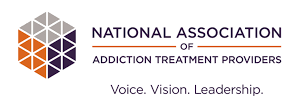Withdrawal symptoms related to crack addiction can be severe, so attending a medically supervised detox program is recommended when ending crack use.
Article at a Glance:
- Crack withdrawal can be very difficult, which is why medical detox programs are recommended for people who want to quit the drug.
- Symptoms of crack withdrawal include agitation, irritability, depression, increased sleeping, increased appetite and muscle aches.
- Crack withdrawal symptoms usually occur within 24 hours of taking the last dose.
- Therapy and counseling can promote long-term crack addiction recovery after detox.
What Is Crack Withdrawal?
Detox is the body’s process of ridding itself of toxic substances, including drugs like crack. If a person is struggling with crack addiction, their body has become dependent on the drug. This causes people to feel ill if they go a certain amount of time without taking the drug. This ill feeling is called withdrawal, and its symptoms occur because the body is adjusting to the sudden absence of the drug it depends on.
Crack withdrawal symptoms can beginwithin 24 hoursof the last dose and continue forup to five days. These symptoms can vary from person to person, but they are often uncomfortable and can prevent people from quitting the drug. This is why it’s important to attend a credible rehab center that includes a medical detox program. Patients in medical detox are monitored by doctors around the clock and receive treatment for any uncomfortable or dangerous withdrawal symptoms that may arise.
A lack of professional care can lead to a relapse of crack use. When this happens, a person is more likely to overdose because their body is no longer used to the drug or the amount they took before detox.
Due to the time-sensitive nature of withdrawal, it’s important to find help as soon as the problem arises. That is the first step toward a healthy and safe recovery from crack.
New Year, New Beginnings.
Whether you are struggling with addiction, mental health or both, our expert team is here to guide you every step of the way. Don’t wait— reach out today to take the first step toward taking control of your life.
How Long Does Crack Withdrawal Last?
Crack withdrawal symptoms often beginwithin 24 hoursof taking the last dose. Acute symptoms typically last forup to five days, but the types of symptoms and the times they appear may vary from person to person.
Crack Cocaine Withdrawal Symptoms
Some people undergoing crack withdrawal will experience severe effects, while others may not experience as many symptoms. Much of this depends on how much a person was taking and how often they were taking it. Other factors include personal medical history, body weight and height, age and family drug history.
Crack withdrawal symptoms are not limited to just physical effects, as psychological or behavioral effects can also occur. Some of the most common symptomsinclude:
- Agitation
- Irritability
- Depression
- Increased sleeping
- Increased appetite
- Muscle aches
Managing Withdrawal Symptoms
Detox at a specialized medical facility allows patients to benefit from the 24/7 supervision that is available. This type of personal attention can help mitigate withdrawal symptoms and create the most comfortable detox experience possible.
During detox, clients may receive medications from doctors to lessen the effects of the withdrawal symptoms. Although there isno FDA-approved medicationfor crack withdrawal, some medications used off-label for crack addiction and withdrawalinclude:
- Baclofen:Muscle relaxer that can reduce cravings
- Nifedipine:Blood pressure medication that can reduce cravings
- Tiagabine:Anticonvulsant that has shown positive results in long-term recovery from cocaine and opiate addiction
- Disulfiram:Alcohol addiction treatment that blocks the high from taking cocaine
Detox and Rehabilitation Process
Detoxis the first step of treatment and can begin when a client arrives at The Recovery Village. During detox, an expert team of nurses provides constant care, and the client receives regular visits from their doctor to ensure withdrawal symptoms are not dangerous to their health. For example, dehydration is one of the risks during this stage. The body uses any means necessary — including diarrhea, vomiting and excessive sweating — to expel substances from the body. This can leave a person dehydrated and lacking nutrients.
Once detox is complete, therapy can begin. Counseling and therapy are the primary components of crack addiction treatment at The Recovery Village. Each treatment plan is customized to meet the client’s individual needs, as there is no one-size-fits-all approach to drug rehabilitation. The length of rehab varies for each client, but research shows that a longer stay usually offers the most benefits.
As treatment continues, The Recovery Village’s medical team helps develop anaftercare planso that the client is set up for success in post-rehab life. Aftercare planning is a significant step in preventing the future use of crack and other drugs. In many cases, aftercare plans include follow-up appointments with doctors and therapists, as well as information on 12-step programs that are available close to the client’s home.
How To Stop Smoking Crack
There are two common ways to stop smoking crack: tapering and quitting cold turkey. Tapering involves decreasing the dosage slowly while quitting cold turkey involves stopping all drug intake at once — usually without any medications to help manage withdrawal symptoms.
Medical professionals advise against the cold turkey detox method, particularly at home. When someone abruptly stops using crack, withdrawal can begin rapidly and be more severe. This can create a life-threatening situation for some people. It can also lead to an overdose if someone returns to a high dosage of crack after not taking it for a period of time.
Seeking professional assistance to taper off of crack can lead to a safer foundation for recovery.
If you or someone you love is struggling with a crack addiction, The Recovery Village is here to help. We provide a full continuum of care that addresses addiction as well as underlying mental health disorders like anxiety and depression.Contact ustoday to learn more about treatment options that can work well for your situation.








